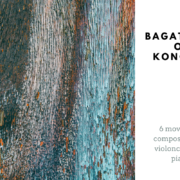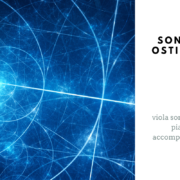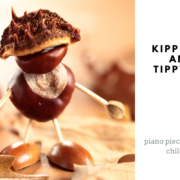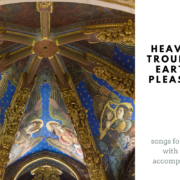Original title: Anyuska regí képe
Chamber cantata for soprano solo , viola, cello and piano, commissioned by opera singer Éva Bátori
Approximately 20 minutes in length
Composer’s Note:
This song cycle consists of seven movements based on poems by Dezső Kosztolányi and by Zsófia’s mother, Judit Tallér. Her mother was a harpist, but she also wrote poetry in her early years. She died in 1994, at the age of 49. Zsófia was also 49 years old when she composed this piece in her memory.
The structure is framed by two poems by Kosztolányi — Anyuska régi képe (Old Picture of Mother) opens the work, while Szegény anyám csak egy dalt zongorázik (My Poor Mother Plays Just One Song on the Piano) concludes it. The five inner movements are based on unpublished poems written by Judit Tallér between the ages of 16 and 22.
Movements:
-
Anyuska régi képe (Old Picture of Mother) — poem by Dezső Kosztolányi
-
Szomorúság (Sadness) — poem by Judit Tallér
-
Maradj, csöndem (Stay, My Silence) — poem by Judit Tallér
-
Keserűen (Bitterly) — poem by Judit Tallér
-
Hogy… / Mondóka (How… / A Little Rhyme) — poem by Judit Tallér
-
Ablakom előtt (Outside My Window) — poem by Judit Tallér
-
Szegény anyám csak egy dalt zongorázik (My Poor Mother Plays Just One Song on the Piano) — poem by Dezső Kosztolányi
The two Kosztolányi settings are subtle, quiet acts of remembrance. In contrast, the five settings of Judit Tallér’s poems are emotionally intense, confessional character songs:
-
Szomorúság rushes forward in breathless eighth-notes and unstable shifting metres, evoking despair through irregular phrasing and harmonic tension.
-
Maradj, csöndem is cradle-like, with lullaby rhythms and unpredictable melodic fragments. It captures the loneliness of self-consolation — and ends abruptly.
-
Keserűen is a morbid death-dance, with raw harmonic textures and syllabic declamation charged with rage and anguish.
-
Ablakom előtt portrays radical isolation. The vocal line is calm and detached, while the instruments maintain a solemn, sacred stasis — even when the viola recalls earlier material, the singer remains withdrawn.
-
Hogy… / Mondóka expresses the flicker of a tentative love. Playful piano gestures are destabilised by the off-kilter entrances of viola and cello. It is the only moment of lightness in the inner cycle.
-
In the closing song, a dogged, knocking accompaniment supports Kosztolányi’s line: “the poor provincial waltz knocks and knocks.” Though not in triple time, the persistent ostinato is funerary in mood. A brief emotional outburst disrupts the pulse — but it soon returns, carrying the song to a quiet close in a questioning C major.
This work is dedicated to the memory of Zsófia’s late mother, Judit Paczolay Tallér, who wrote poetry as a young woman between the ages of sixteen and twenty-two. Though encouraged by prominent poets and briefly published under the name Tallér Judit, she never returned to writing. Instead, she devoted her life to teaching piano in rural music schools. A trained harpist, she passed away in 1994 at the age of 49.
Zsófia was the same age when she composed this piece — a quiet act of remembrance, both musical and personal.
Premiere:
10 October 2018, CAFe Budapest Contemporary Arts Festival – Mini Festival, Mirror Hall, Festetics Palace, Budapest
Performers:
Éva Bátori (soprano)
Anita Inhof, András Kurgyis (viola)
Zsanett Szatzker (cello)
Katalin Anducska (piano)









